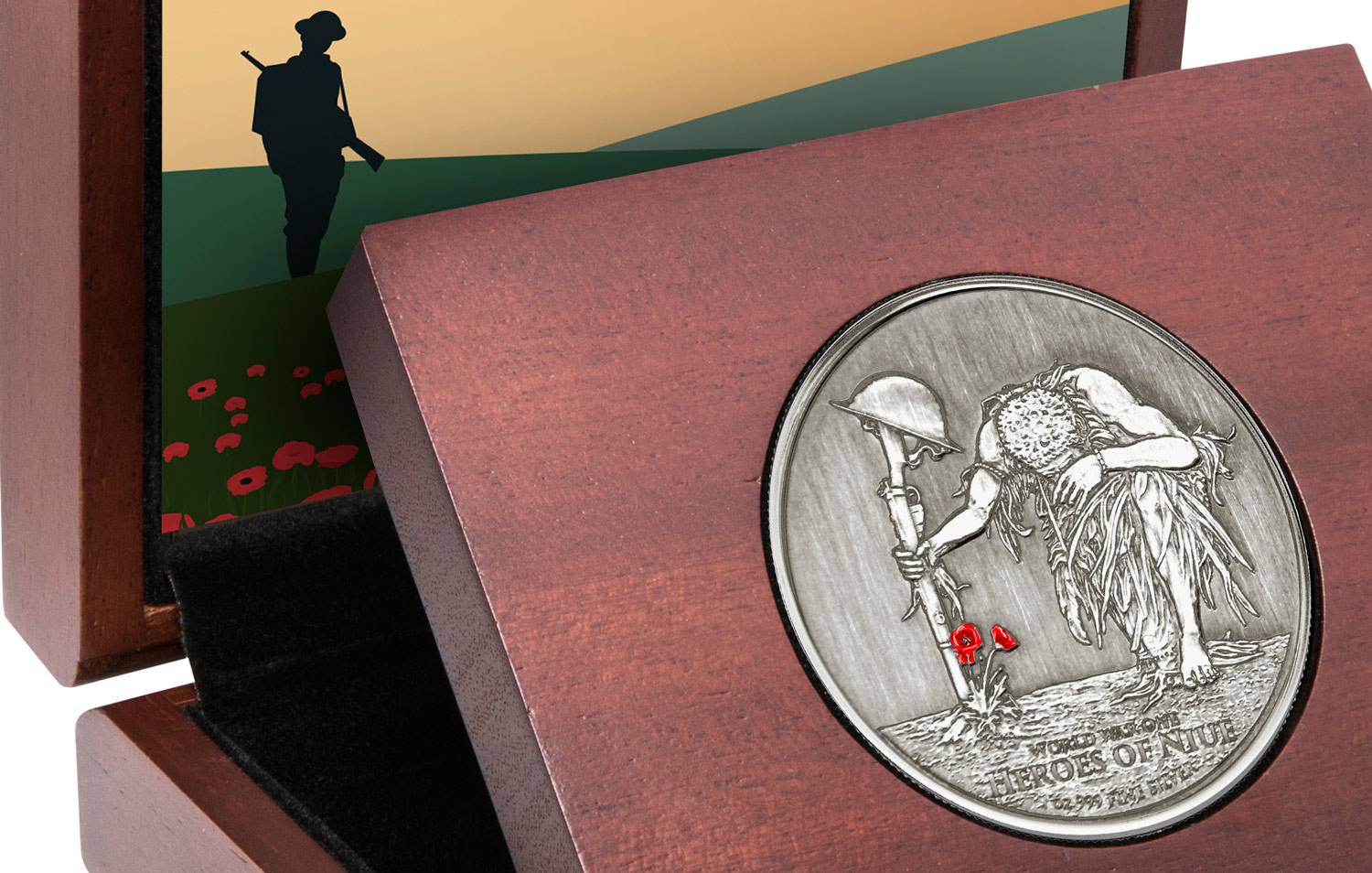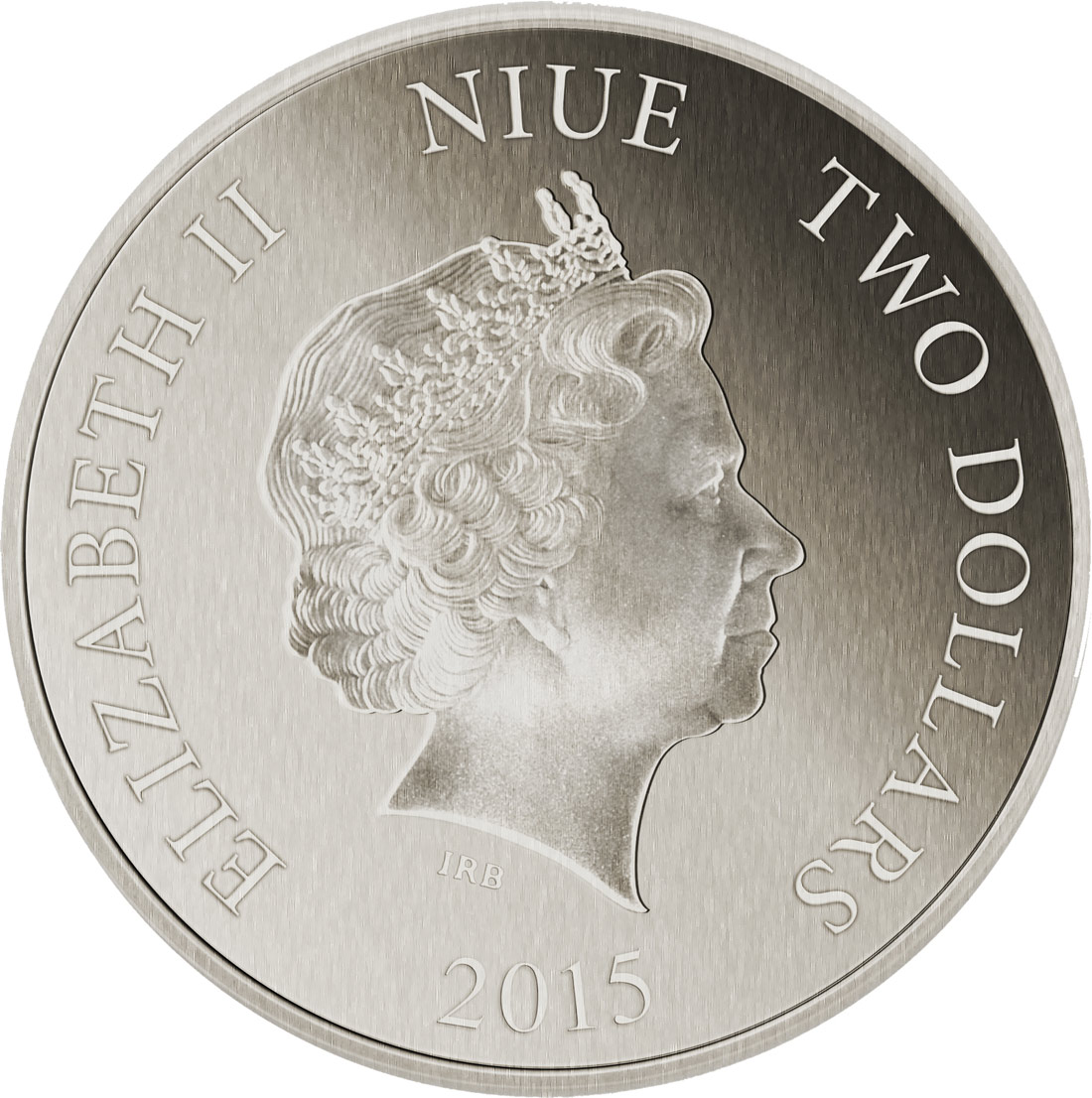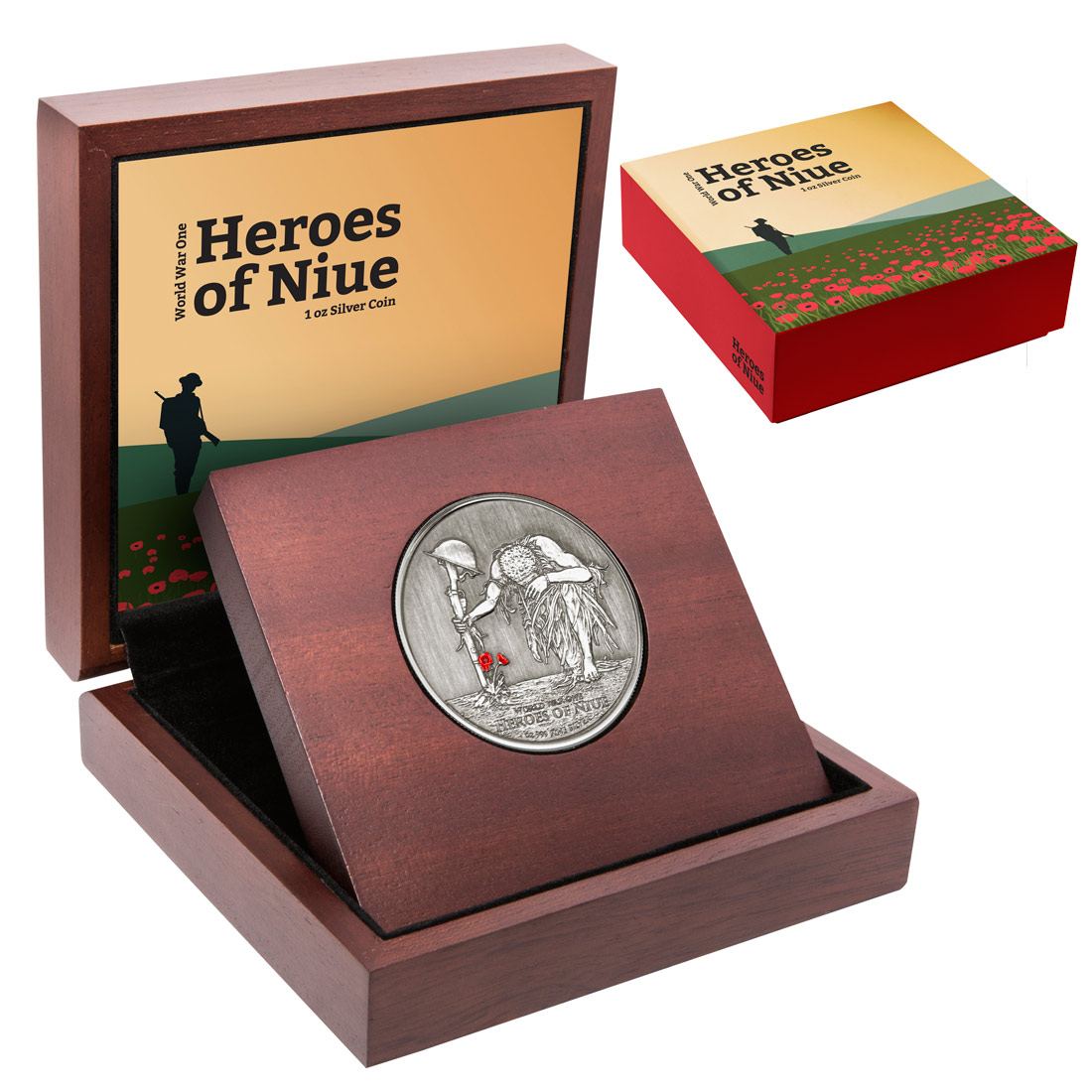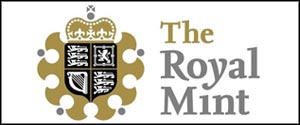Niue is a tiny island country in the South Pacific Island less than 260² km (100² miles) in size and about as far from the European continent as it’s possible to get without going into orbit. Despite this, it found itself contributing its men to the first Great War that erupted there in 1914. Having become a British Protectorate in 1901 at their own request and very quickly assigned to New Zealand, the people felt an obligation to help the Empire in its time of need and when finally asked to help, almost 150 from a population of just 4,000 rushed forward to do so. The tragic story that followed is told below by the mint themselves and is a poignant reminder of just how far and how deeply a war like that reaches out and causes harm.
The coin itself is a perfect encapsulation of the loss of this small island nation. A man in native island dress is depicted kneeling in sorrow and holding onto a Lee Enfield short-mag rifle driven into the ground, upon which a Tommies helmet rests, in what is a traditional battlefield grave marker. The antique finish looks very appropriate, and the use of colour is inspired enough that even those who hate colour applied to silver coins will accept it. It’s a fine design in our opinion and one of the first to feature Niue as the subject instead of simply being the issuer. Even as someone who reads about military history constantly, I had no idea of Niue’s contribution to the First World War and I’d imagine few people do, so the existence of this coin can only help raise awareness of their contribution to the world’s freedom.
Packaged in one of the New Zealand Mints excellent wooden boxes usually reserved for their gold releases, the coin is limited to a maximum of just 1915 pieces and should sell for $80 USD. It will be available from 10 August on the NZM website and no doubt from many of their numerous dealers worldwide.
MINTS DESCRIPTION
In 1901, in order to avoid losing a strategic hold in the Pacific Ocean to a foreign power, the island of Niue became a British protectorate and was voluntarily annexed to New Zealand. Upon the outbreak of the First World War just over one decade later, an enthusiastic recruitment campaign commenced to support the war effort through the provision of both men and finances.
Niue’s offer of support for the New Zealand Expeditionary Force was not initially accepted, as the newly formed Maori Contingent had already been filled with New Zealand based volunteers. This was to change following the tragic Gallipoli campaign in 1915, when recruitment in New Zealand became more difficult, forcing the government to look to the Pacific Islands for reinforcements. From a population of only 4,000 people, 149 men were recruited on Niue in October 1915, and embarked for Auckland (New Zealand). There, the men underwent training at Narrow Neck Camp, as part of the 3rd Maori Reinforcements.
The new recruits faced many difficulties in leaving their local culture and island homes. Most struggled to adjust to the army uniform, footwear, the unfamiliar diet, and New Zealand culture. Men who had an understanding of the English language were immediately promoted to the rank of NCO. The greatest issue, however, was a lack of immunity to European diseases due to years of isolation. Many common illnesses were unknown on Niue, yet the real danger lay in respiratory infections that often followed the onset of illness.
On Christmas Day, 1915, the first Niuean soldier died of pneumonia and was buried at O’Neill’s Point Cemetery in Auckland. It was mid-May of the following year before news of this death reached the island. In February 1916 the men embarked for training in Egypt where the New Zealand Expeditionary Force was regrouping having been withdrawn from Gallipoli (Turkey). Upon their arrival, a number of the men were hospitalised with complications arising from dysentery, influenza, and measles. Some were never to recover. Less than two months later, the Niuean troops were dispatched to the Western Front in Northern France.
Concerns had been expressed over how the men would fare in the cold European climate, however, it was felt that the proximity of spring would alleviate this issue. Sadly, this was not to be the case. Sickness and death were unrelenting as the men dug trenches under enemy fire. By the end of May 1916, 82 percent of the original 149 men were out of action. These compounded facts led to the withdrawal of Niuean troops from Northern France to England, where they could recover at the New Zealand Convalescent Hospital in Hornchurch, before returning home. Today, you can still visit the graves of Niuean soldiers who died there.
The main body of Niuean troops returned to New Zealand in the latter half of 1916. Over the course of this voyage, five men died of sickness and were buried at sea. On arrival in Auckland a further two soldiers died before transportation to Niue could be arranged. Upon their return to Niue, the men’s welcome was also marked with sadness for those who had been lost. In the words of the Resident Commissioners report ‘There is the sadness of lonely Niuean graves in countries the names of which were hardly known hitherto’.
Today, Niue commemorates the contribution and sacrifice made by these men, with annual ANZAC Day (Memorial Day) services held on April 25. The tragedy of this unique story is tempered with pride that their nation and men participated. 2015 marks the 100th Anniversary of these Niuean Heroes leaving their homes to serve their country.
ADVERTISEMENTS










Leave A Comment